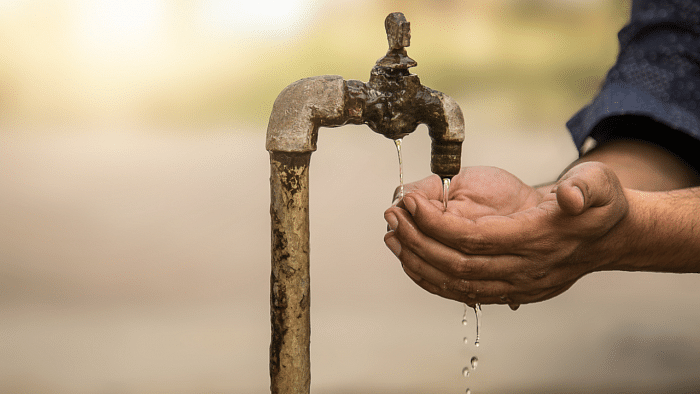
Less than a quarter of Indian rural households and under two-thirds of urban ones reported having piped drinking water in their yard or houses, as per a National Sample Survey Office (NSSO) report.
About 70 per cent of rural households reported having exclusive access to a latrine while 21.3 per cent reported not having access to one, exclusive or otherwise.
This report is part of a larger survey that also shows almost half the rural households are still using firewood as their primary energy source for cooking.
The Multiple Indicator Survey (MIS) was initially planned to be conducted in 2020 but was extended till August 15, 2021, after the pandemic. The survey covered 1.6 lakh households in rural areas and 1.1 lakh households in urban areas.
At the time of the survey, 16.1 per cent of males and 43.8 per cent of females aged 15-24 were neither studying nor working. They had not been trained either. Less than half of those aged 18 or above had exclusive access to mobiles.
Financial inclusion has been progressing in India though, the report confirms, with almost 90 per cent of those surveyed reporting having an account individually or jointly with banks, mobile money service providers or other financial institutions.
Over 95.7 per cent of people reported having access to an 'improved source of drinking water' but penetration of piped drinking water remains abysmal in several states.
Sources of drinking water can include water taken from packed bottles, piper water in a house, yard, or from a neighbour, a public tap, hand pump, tube well, covered well, and tanker, among others.
Assam, Uttar Pradesh, Jharkhand, Odisha, and Bihar are among the major states with the worst access to tapped drinking water in both rural and urban households. Meanwhile, Manipur, Nagaland, Kerala, and Jharkhand have less than 90 per cent access to improved drinking water sources.
Bihar, Jharkhand, and Odisha have the least rural households with access to exclusive toilets. In all other states, the proportion of such households is over 60 per cent. In these three states, over 30 per cent of households also do not have access to any latrine.
Chhattisgarh, West Bengal, Odisha, Madhya Pradesh, Nagaland and Jharkhand have less than 25 per cent of households using LPG for cooking, relying on firewood instead, making it the lowest among all states and Union Territories.
Among larger states, Uttarakhand, Odisha, Delhi, and Kerala have the highest proportion of men—over 20 per cent—aged 15-24 who were not in education, employment or training at the time of the survey. For females, this proportion was highest in West Bengal, Uttar Pradesh, Assam, Gujarat, Odisha, and Bihar.
In Jharkhand and UP, less than a third of the 18-plus population have exclusive access to mobile phones.